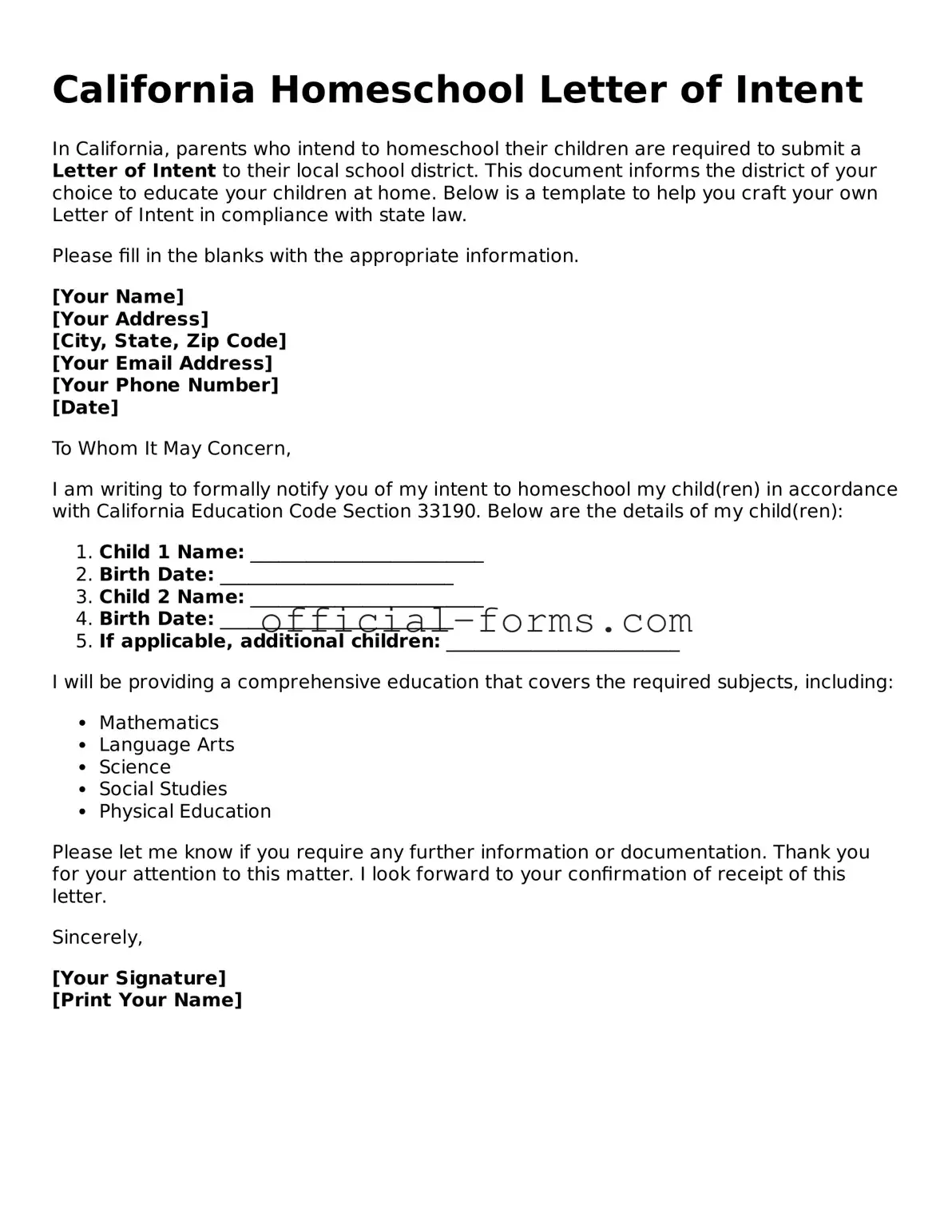Filling out the California Homeschool Letter of Intent form is an important step for parents looking to educate their children at home. However, many make common mistakes that can lead to delays or issues with their homeschooling plans. Understanding these pitfalls can help ensure a smoother process.
One frequent mistake is not providing complete information. Parents sometimes forget to include all required details, such as the names and birth dates of the children being homeschooled. Omitting this information can result in the form being rejected or delayed, which can hinder the start of the homeschooling journey.
Another common error is failing to sign and date the form. It may seem simple, but without a signature, the form is not valid. This oversight can lead to confusion and may require resubmission, causing unnecessary delays in the homeschooling process.
Some individuals also neglect to check for spelling and grammatical errors. While it may not seem significant, clear communication is essential. Errors can lead to misunderstandings or questions from the school district. Taking the time to proofread can make a big difference.
Many parents forget to submit the form on time. California law requires that the Letter of Intent be filed within a certain timeframe. Missing this deadline can result in complications, including the need to explain the delay to the school district.
Additionally, some people are unaware of the need to update the form if circumstances change. If a family moves or if there are changes in the children’s educational status, it’s crucial to submit an updated Letter of Intent. Failing to do so can lead to confusion and potential legal issues.
Finally, misunderstanding the requirements for homeschooling can lead to mistakes. Some parents may not be fully aware of the laws governing homeschooling in California. Researching and understanding these laws can help avoid unnecessary errors on the form.
